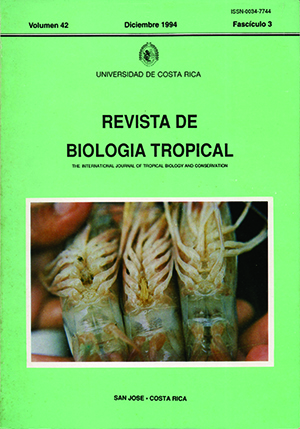Resumen
Se examinó el contenido estomacal de 582 ejemplares del sábalo Megalops atlanticus Valenciennes (Pisces: Megalopidae) capturados entre febrero y diciembre de 1990 en la región de la Ciénaga Grande de Santa Marta, un complejo deltaico-estuarino en la costa Caribe de Colombia, por los métodos gravimétrico y de frecuencia de ocunencia. Se cuantificaron 11 ítemes alimentarios, entre gastrópodos, camarones, insectos, peces y restos vegetales. La dieta del sábalo en la CGSM la constituyen básicamente dos grupos de peces: juveniles de lisas (Mugil spp., probablemente en su mayor parte M. incilis) y poecílidos (Poecilia cf. gilli). Los primeros predominan en la dieta en los meses de marzo a julio cuando hay inmigraciones masivas de estos juveniles desde el mar, mientras que los poecílidos, al parecer residentes pennanentes, se hacen importantes en la dieta sólo al escasear los juveniles de las lisas (septiembre a febrero). A medida que crece, el sábalo se vuelve más pisCÍVOro y menos insectívoro. Los insectos son también más abundantes en la dieta de los sábalos capturados en lagunas internas, donde a su vez se observó mayor diversidad alimentaria, que en las desembocaduras de ríos donde el ambiente es más dinámico y fluctuante.##plugins.facebook.comentarios##

Esta obra está bajo una licencia internacional Creative Commons Atribución 4.0.
Derechos de autor 1994 Revista de Biología Tropical
Descargas
Los datos de descargas todavía no están disponibles.


